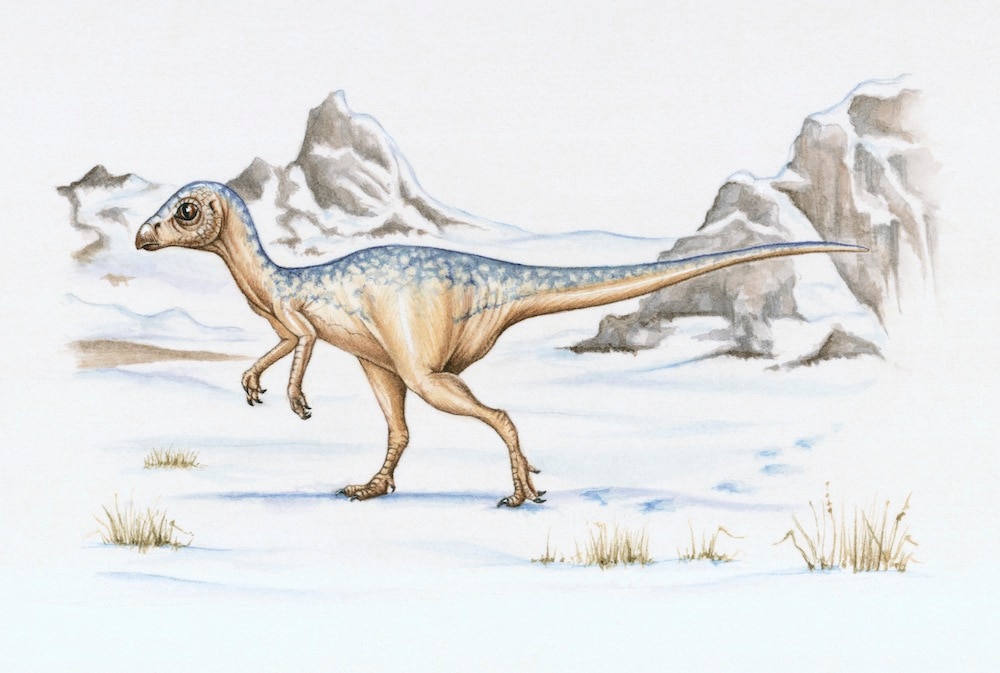Create a free profile to get unlimited access to exclusive videos, sweepstakes, and more!
Were dinosaurs warm or cold blooded? New clues in their bones say both
Paleontology is heating up!

If the human characters in Jurassic World Dominion have any hope of surviving a world overrun with dinosaurs, they’re going to need to have a good understanding of how those dinosaurs live and interact with the environment. Knowing whether or not the dinosaur in front of you is slow and lumbering, happy to skip a meal every now and again, or quick and insatiable, could be the difference between life and death.
Of course, if you’re living in a world with dinosaurs that might just be a matter of a few observations. For those of us in the real world, however, understanding the metabolism of dinosaurs has long been an unanswered question, and it goes back to our shifting understanding of what kinds of animals dinosaurs were. New research from scientists at Yale University may have finally solved the metabolic mystery by looking at unique properties of dinosaur bones. Their findings were published in the journal Nature.
The first dinosaur ever described was Megalosaurus, a bi-pedal predatory animal from the Middle-Jurassic. Taking a look at its name gives us a clue to how we first envisioned it and other dinosaurs. It’s a two-part construction with “mega” meaning great and “sauros” meaning lizard. In fact, the suffix “sauros” makes up the latter portion of a great many dinosaurs. That’s because when they were first discovered they were thought to have been gigantic ancient reptiles. That view held for most of paleontological history.
More recently, we’ve learned that many dinosaurs were more closely related to modern birds, both anatomically and morphologically. We know now that modern birds are actually living dinosaurs. Just take a quick look at the cassowary if you’re unsure. That placed dinosaurs precariously between reptiles and birds, cold-blooded and warm-blooded.
Knowing where they fall on the metabolic spectrum could help paleontologists — and any future humans forced to live alongside dinosaurs — to answer questions about how active they were and what sorts of lifestyles they enjoyed.
The metabolic rate of individual dinosaur species has, so far, been a tough nut to crack. Having only their bones to work with has made it difficult to determine how much they ate, how often they breathed, and how quickly they transformed oxygen into energy. The new study reveals that most dinosaurs were warm-blooded, despite their reputation as lumbering prehistoric lizards.
Scientists were able to glimpse at the metabolic rate of dinosaurs by looking at waste products left behind in their bones. When animals breathe, reactions with proteins, sugars, and lipids leave behind molecular waste which is incredibly stable and preserves during fossilization. Looking for those markers, scientists were able to figure out how often extinct animals were breathing during the last hour of their lives.
They looked at the femur bones of 55 groups of extinct and living animals in order to compare the metabolisms of dinosaurs, pterosaurs, and plesiosaurs with those of mammals, birds, and reptiles. When compared with living animals, researchers found that sauropods (your long-necked dinosaurs like brachiosaurus) and theropods (your bipedal predators like T. rex) were not only warm-blooded, but many of them had relatively high metabolisms on par with modern birds. Meanwhile, many of the squatter quadrupeds like stegosaurs and triceratops had lower rates comparable to modern reptiles.
We know that animals with higher metabolic rates are capable of maintaining their own body temperature but also need to consume more food in order to maintain energy levels. A slower metabolism requires less fuel but is also dependent on the environment to maintain body temperature. Overall, researchers found that the majority of dinosaurs were warm-blooded, once again shifting the popular image of the animals away from the great lizards we once thought them to be.
That’s bad news for the humans in Jurassic World Dominion. All things being equal, any dinosaur they’re likely to encounter will probably be fast and hungry.
Jurassic World Dominion opens in domestic theaters June 10.


























